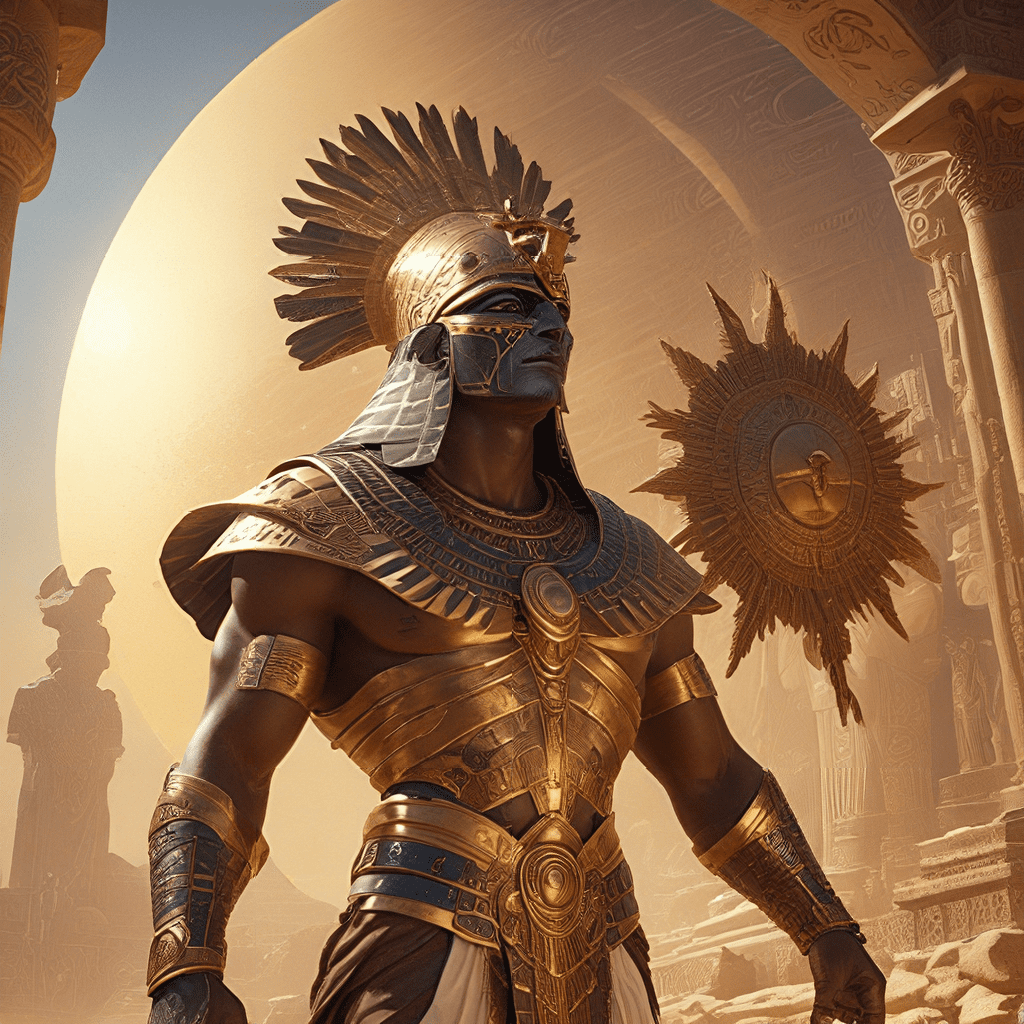Horus: The God of the Sun
I. Introduction: The Mighty Horus
In the ancient Egyptian pantheon, Horus stands as a towering figure, revered as the god of the sun, kingship, and protection. His image, often depicted as a falcon with a human head, graced temples and tombs, symbolizing power, strength, and the divine right of rulers. His story is intricately woven into the fabric of Egyptian mythology, reflecting the cyclical nature of life, death, and rebirth.
II. Origins and Family: Son of Osiris and Isis
A. The Murder of Osiris
Horus’s origins are steeped in tragedy and divine drama. His father, Osiris, the god of the underworld and resurrection, was treacherously murdered by his own brother, Set, the god of chaos and storms. Osiris’s body was dismembered and scattered across Egypt.
B. Horus’s Birth and the Battle for the Throne
From this tragedy emerged Horus, born to Osiris’s grieving wife, Isis. Horus was destined to avenge his father’s death and claim his rightful place on the throne of Egypt. However, Set, fueled by jealousy and greed, sought to usurp the throne, leading to a fierce battle between the two gods. This cosmic struggle embodies the constant struggle between order and chaos, good and evil, that permeated ancient Egyptian beliefs.
III. Horus’s Role as the Sun God
A. Horus and the Sun’s Journey
Beyond his role as the king’s protector, Horus was also inextricably linked to the sun god Ra. He was seen as Ra’s son, embodying the sun’s power and its daily journey across the sky. Each morning, Horus rose with the sun, bringing light and life to the world, and each evening, he sailed across the underworld with Ra, conquering the forces of darkness.
B. The Eye of Horus: Symbol of Protection and Royal Power
The Eye of Horus, a powerful symbol in Egyptian mythology, is often associated with Horus’s protective nature. It represents wholeness, health, and royal power. The Eye of Horus was believed to possess magical healing properties and was often depicted in amulets and funerary objects. The symbol served as a reminder of Horus’s divine protection and the enduring power of the sun.
IV. Horus’s Many Forms and Manifestations
A. Horus the Child
Horus was often depicted as a child, symbolizing innocence, potential, and the early stages of life. This image highlights his role as the divine heir, waiting to inherit his father’s power and responsibility.
B. Horus the Avenger
As the avenging son, Horus’s image often portrays him in a fierce, battle-ready stance. He is depicted wielding weapons, demonstrating his unwavering commitment to justice and the defeat of evil.
C. Horus the King
Finally, Horus was revered as the divine king, representing the power and legitimacy of the Pharaoh. His image adorned royal tombs and temples, underscoring the connection between earthly rulers and divine authority.
V. Horus in Egyptian Art and Literature
A. Depictions in Temples and Tombs
Horus’s presence can be felt throughout Egyptian art and architecture. His image appears in numerous temples, tombs, and relief carvings. He is often depicted as a falcon, sometimes with a human head, symbolizing his strength, vigilance, and connection to the sun.
B. Mythological Tales and Stories
Horus’s story is central to many Egyptian myths and tales. The most famous is the “Eye of Horus” myth, which recounts the story of Horus’s battle against Set and the loss of his eye, symbolizing the constant struggle between light and darkness. This myth highlights the theme of perseverance and the eventual triumph of good over evil.
VI. Horus’s Influence on Other Cultures
A. The Greek God Apollo
Horus’s influence can be seen in other cultures, particularly in the Greek god Apollo. Apollo, like Horus, was associated with the sun, music, and healing. His role as a god of light and knowledge echoes the themes of illumination and wisdom associated with Horus.
B. The Roman God Sol
The Roman god Sol, representing the sun, also exhibits similarities to Horus. Sol’s association with the sun’s power, light, and life mirrors Horus’s role as the sun god and his connection to the cycle of life and death.
VII. Horus in Modern Culture
A. Symbolism in Contemporary Art and Literature
Horus’s symbolism and mythology continue to resonate in modern culture. The Eye of Horus remains a powerful symbol in art, literature, and popular culture, representing protection, strength, and the divine.
B. Horus in Popular Culture
Horus’s image and story have found their way into films, television shows, and video games. His connection to ancient Egypt and his symbolism of power and protection continue to fascinate and inspire audiences today.
VIII. Conclusion: The Enduring Legacy of Horus
Horus’s legacy as a powerful god of the sun, kingship, and protection endures. His story embodies the eternal struggle between order and chaos, light and darkness. He serves as a timeless symbol of strength, resilience, and the enduring power of the divine. Horus’s influence on Egyptian mythology, art, and culture is undeniable, and his image continues to inspire and captivate people around the world.




